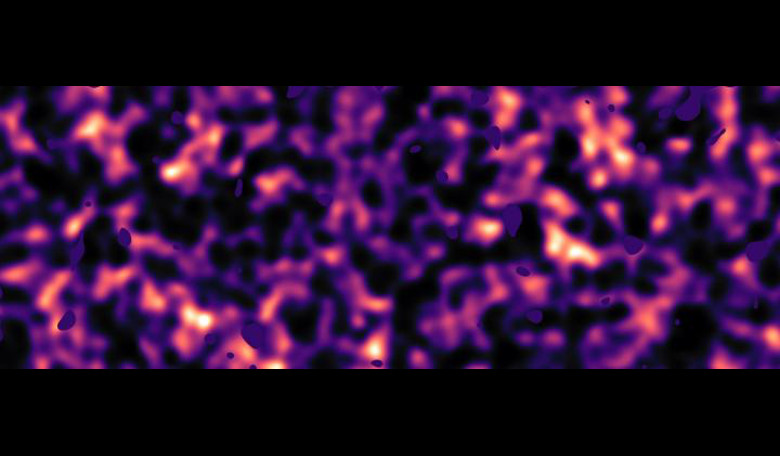Scientists studying the nature of dark matter have used ESO's VLT Survey Telescope (VST) in Chile to observe five patches of the sky containing around 15 million galaxies and now suggest that the elusive material that accounts for much of the mass of the Universe is more smoothly distributed throughout space than previously thought.
The study, which involved an international team of astronomers analysed images collected in the Kilo Degree Survey (KiDS) that covered a total area of around 2200 times the size of the full Moon. By using innovative computer software, the team, headed by Hendrik Hildebrandt from the Argelander-Institut für Astronomie in Bonn, Germany and Massimo Viola from the Leiden Observatory in the Netherlands, were able to carry out one of the most precise measurements ever made of an effect known as cosmic shear.
Cosmic shear is the distortion of images of distant galaxies due to weak gravitational lensing – the bending of light by gravity – by the large-scale structure in the Universe.
"This latest result indicates that dark matter in the cosmic web, which accounts for about one-quarter of the content of the Universe, is less clumpy than we previously believed,” said Viola.
These new results however contradict the findings published by those involved in the Planck mission. This previous study, which probed the fundamental properties of the Universe soon after the Big Bang, used a theoretical model to project how the Universe should appear today. A key difference is that the measurements by the KiDS team of how clumpy matter is throughout the Universe is significantly lower than the value derived from the Planck data.
The disagreement between the latest direct measurements and those obtained with the Planck data suggests that scientists' understanding of the last 14 billion years of the evolving Universe and how it should appear today is incomplete and needs more research.
"Unravelling what has happened since the Big Bang is a complex challenge, but by continuing to study the distant skies, we can build a picture of how our modern Universe has evolved,” added the co-leader of the study, Catherine Heymans of the University of Edinburgh.
"We see an intriguing discrepancy with Planck cosmology at the moment. Future missions such as the Euclid satellite and the Large Synoptic Survey Telescope will allow us to repeat these measurements and better understand what the Universe is really telling us," concludes Konrad Kuijken (Leiden Observatory, the Netherlands), who is principal investigator of the KiDS survey.











